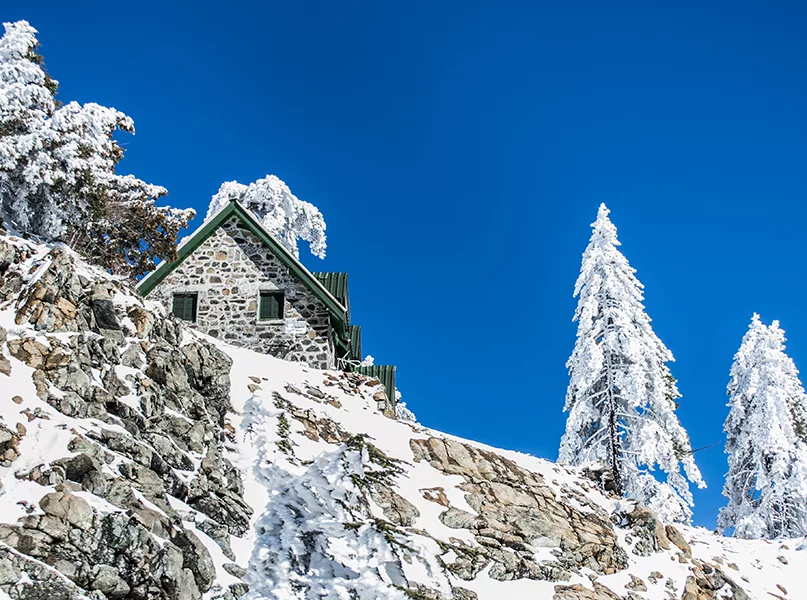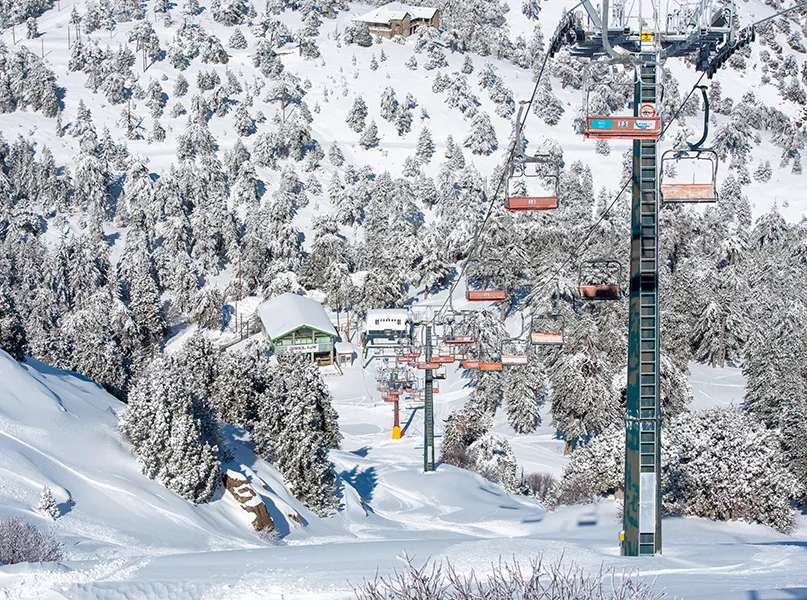Warm sunshine, rugged, sun-dappled landscapes, and a unique and multifaceted intersection of cultures and histories combine to offer a mosaic of unmatched beauty and unforgettable experiences on the island of Cyprus.
INTRODUCTION
An island blessed with golden, pebbled beaches, lapped by the warm waters of the Mediterranean Sea, and presiding beneath often cloudless, azure skies, Cyprus is an alluring getaway not to be missed.
Enjoying between 300 and 340 days of year-round sunshine, the island provides a perfect spot for sun-worshipers.
Steeped in history, Cyprus’ geographical location represents an important intersection of European, Asian, and African influence, having shaped the stories of many ancient civilisations.
The history books show that Cyprus may have been inhabited as far back as 6,000 BCE, ruled in turn by the Hittites, the Egyptians, the Persians, and the Greeks, before being absorbed into the Roman Empire. Thus, the island’s complex annals, ancient architecture, and interesting archaeological sites, three of which are UNESCO World Heritage Sites, provide a source of discovery and intrigue for tourists and historians alike.
Affectionately dubbed the ‘Island of Love’, the ancient Greeks believed Cyprus to be a playground of the gods and the birthplace of the mythological goddess of love, Aphrodite, who was allegedly born of seafoam off the island’s southwestern coast. As such, coveted sites such as Aphrodite’s Rock and the Baths of Aphrodite remain important cultural landmarks.
Mount Olympos, located in the pine-scented Troodos Mountain range, is Cyprus’ highest point at over 6,000 feet (ft) and offers stunning 360-degree views of the island’s rugged landscapes. The four-hour Artemis nature trail around the mountain’s foothills, named after the Greek goddess of the wilderness, allows visitors to immerse themselves in the raw beauty of the Cypriot countryside.
So, whether you seek the warm sea breeze of the Mediterranean or the splendour of the island’s inland mountain ranges, Cyprus is truly a site of blissful relaxation. In the words of British novelist Lawrence Durrell, who famously spent three years on the island documenting its beauty in his autobiographical novel The Bitter Lemons of Cyprus, “nothing must be done in a hurry, for that would be hostile to the spirit of this place.”

Q&A WITH CYPRUS HOTELS ASSOCIATION
We speak to Philokypros Roussounides, Director General of the Cyprus Hotel Association, who recounts the important role that the organisation plays in the development of tourism in the region and how the island’s historical depth and cultural richness continue to contribute to a growing travel and tourism sector.
Firstly, what are the overall aims of the Cyprus Hotel Association?
Philokypros Roussounides, Director General (PR): The Cyprus Hotels Association is the guardian of the country’s tourism industry. In an advisory role, we guide our members on issues concerning the development of hotel units and the improvement of the professional level of hoteliers; we protect and promote their interests and strengthen the efforts made to upgrade and promote the tourism product of Cyprus.
However, our involvement in the country’s decision-making centres is also of decisive importance. In cooperation with relevant government departments and ministries, we provide direct information to our members in relation to the issuance of protocols, support plans, and government incentives, while at the same time participating with expertise in the preparation of legislation concerning the industry and tourism in general.
How would you say the Cypriot tourism industry has evolved over time?
PR: The tourism sector is one of the main pillars of the Cypriot economy, contributing significantly to Cyprus’ GDP and providing employment opportunities. Hotels play a leading role in tourism, undertaking the crucial task of hosting both foreign and local visitors.
However, it is an industry that has been significantly affected by the 1974 Turkish invasion, which impacts the smooth functioning of tourism in the country to this day. Due to the Turkish invasion, Cyprus lost more than half of the coastline it once controlled.
As such, Cyprus today controls only 316.2 kilometres (km) of the island’s coastline, as opposed to the 420.5km controlled by occupying Turkey. At the same time, the country lost access to Nicosia International Airport and its associated connectivity.
As a result of this, along with other consequences of the Turkish invasion, Cyprus lost 40 percent of the tourism it enjoyed prior to the invasion. Over time, however, the industry survived and has since experienced significant growth.

What are some of the key locations that travellers should prioritise when visiting Cyprus?
PR: Cyprus is an island rich in history, culture, and natural beauty, offering a wide range of experiences for visitors. From ancient sights to local culture and cuisine, Cyprus has something to offer everyone. Some key attractions not to be missed include:
- Paphos Archaeological Park: This UNESCO World Heritage Site is home to a wealth of ancient ruins, including Roman villas with exquisite mosaics, the Odeon, and the Tombs of the Kings, offering a glimpse into the island’s past dating back to the 4th century BCE.
- Ayia Napa: Famous for its beautiful beaches, such as Nissi Beach, Ayia Napa is also known for its vibrant nightlife. However, it’s not just about partying – the area also boasts the Ayia Napa Monastery and the Thalassa Municipal Museum.
- Troodos Mountains: Ideal for hiking, wine tasting, and visiting traditional villages, the Troodos Mountains are home to Byzantine monasteries and churches on UNESCO’s list of World Heritage Sites, such as the Kykkos Monastery.
- Akamas: A nature reserve known for its biodiversity, scenic beauty, and the Baths of Aphrodite, Akamas is a great spot for hiking, jeep safaris, and enjoying unspoiled beaches.
How do you market Cyprus as a competitive travel destination?
PR: Through a range of infrastructure, from luxury hotels to budget accommodation in sea, mountain, and city settings, we are able to respond to the different preferences and needs of visitors, offering a total tourist experience with a range of amenities, services, and entertainment options.
At the same time, Cyprus is evolving into an attractive destination that is value for money. I believe that we are close to cementing this status, something that our tourism partners abroad have assured us is the case.
Cyprus’ recent evolution can be, in part, attributed to tourist tariff increases from our competitors in Spain, Greece, Italy, and Portugal since 2021. These were aimed at covering heightened operating costs caused by significant challenges such as energy prices, economic inflation, high interest rates, and geopolitical developments.

How does Cyprus appeal to travellers throughout all four seasons of the year?
PR: Cyprus’ year-round appeal lies in its ability to offer something for everyone, whatever the season. Whether it’s outdoor activities and festivals, exploring ancient ruins and cultural sites, or simply relaxing by the sea and mountains, Cyprus offers a wide range of experiences that appeal to all types of travellers.
As the largest established tourism organisation board in Cyprus, how important are members to the Cyprus Hotel Association?
PR: The association plays an important role in the development of the industry, as well as in the resilience and sustainability of the tourism sector.
Our members are an integral part of our efforts, and through dialogue and close relations, we formulate appropriate strategies and actions for the benefit of tourism and the Cypriot economy.

What makes Cyprus an inspiring place to discover, and how is it different to other destinations in Europe?
PR: Cyprus seamlessly combines historical depth, cultural richness, and natural splendour to present a mosaic of experiences that fascinate visitors.
From the ancient ruins that dot the island to the enchanting beaches of Ayia Napa and the serene beauty of the Troodos Mountains and the Akamas peninsula, the island offers a unique journey through time and tradition.
Its landscapes are as diverse as its history, from rugged coastlines to mountainous hinterlands, each telling a story of cultures past and present.
Cyprus invites explorers to discover its archaeological treasures, enjoy its vibrant festivals, and take in its natural wonders, making it a destination that embodies the essence of the Mediterranean spirit.
Finally, are you optimistic about the future of the tourism industry in Cyprus?
PR: Without a doubt. In the short term, the future of tourism will largely depend on the stability of global politics, markets, and geopolitical developments.
Now, we cannot make optimistic predictions, as although the initial signals were positive, we have seen a downward trend in bookings since January, which is expected to continue in the coming months. This development is a result of the war in our neighbourhood and publications that implicate our country with various political movements.
But, in the long term, we are very optimistic. We are an industry with strong resilience that has proven to successfully overcome any challenge. At the same time, our country offers an attractive tourist product that will always appeal to travellers.
SKIING IN CYPRUS
Despite Cyprus’ widely perceived reputation as a destination exclusive to sun-seekers, remarkably, some of the island’s highest points provide ample opportunities for winter sports aficionados a staggering 2,000m above sea level
Each winter, the Troodos Mountains, known for their breathtaking views and dewy, sun-soaked foothills, enjoy a generous smattering of thick white snow upon the highest peaks.
Between mid-January and late March, Mount Olympos, the range’s most sizable summit, is transformed into a haven for skiers and snowboarders, featuring both downhill and cross-country slopes. Boasting four ski lifts, eight downhill alpine ski runs, and various cross-country tracks, the Troodos Ski Resort offers something for everyone.
Aptly named, many of the resort’s slopes feature monikers from Greek gods and goddesses. The Hera and Aphrodite slopes offer shorter, beginner-level ski courses, whilst the Zeus and Hermes slopes provide a challenge for intermediate and experienced skiers.

A walking trail to the Skolio Peak of Mount Olympos likewise offers experienced hikers a unique and challenging pursuit. Those who reach the summit boast the rare privilege of observing endless, 360-degree vistas, where cloudless Mediterranean skies meet the snowy horizons beneath.
The winter ambience will warm your soul in the areas surrounding Mount Olympos, such as Alatres, Agros, Pedoulas, and the village of Kakopetria, where visitors can find cosy, convenient accommodation.
So, whether you seek the childish joy of immersing yourself in sledding and snowball fights, the personal triumph of taking in the stunning views from Skolio Peak, or the stimulating ski slopes that grace the face of the Troodos Mountains, don’t miss the unique opportunity to don your skis beneath the Mediterranean sunshine in Cyprus this winter.

OUTLOOK RECOMMENDS
Do:
For Reconnecting with Nature…
Hike the magical 2.4km trail through dense, verdant forestry along the Kryos Potamos River towards the Caledonia waterfall. The impressive 12 metre (m) fall acquired its moniker from international travellers who were fascinated by the natural landscape, which reminded them of their Caledonian homeland in Scotland. Surrounded by local flora and wildlife, including gentle birdsong from native swallows, those who visit the waterfall are able to truly immerse themselves in the Cypriot wilderness.
For an Ocean Adventure…
Located just 10 minutes by bus from the town of Protaras, Cape Greco presents a group of intriguing, arching caves with the clearest waters beneath. Located in the southeastern corner of the island, Cape Greco is also the easternmost point of the European Union (EU). For those seeking an adrenaline rush, there’s a popular spot where locals will teach you to cliff jump into the warm blue waters and explore the caves below. Alternatively, a short climb down to the shore below presents a more cautious option.

Eat:
For a Collision of Global Cuisines…
Visit Limassol AGORA – a food court with a difference. The perfect destination to enjoy delicious international cuisines and featuring over 12 different food vendors from across the globe, Limassol AGORA offers sweet treats, tasty tipples, and savoury delicacies, including dishes from Mexico, Japan, Italy, Lebanon, and the Caribbean. In addition, whilst the adults tuck into the fabulous food, children can enjoy endless entertainment in PlayLounge, an extensive, safe, and modern soft-play area.
For Authentic Local Flavours…
Mousikos Tavern, located close to the village of Sotira in the east of the island, showcases true, local Cypriot cuisine in all its rustic glory. A large, natural windmill graces the entrance of the restored building, whilst outdoor seating on a paved courtyard featuring trailing grapevines provides the perfect setting beneath the sun. Serving freshly churned, unpasteurised halloumi, warm, homemade bread, and generous meze platters featuring traditional moussaka, lamb kleftico, and sheftalia, this authentic gem is not to be missed.

Sleep:
For Laidback Luxury…
Visit Amara, a 5-star luxury resort, offers high-end accommodation in a serene setting. Drawing inspiration from the natural beauty of the inviting, azure waters it overlooks, the hotel is known for its 180-degree views of the Cypriot coastline. First-class service, generous suites, and a tasteful, chic design are just a few examples of what makes Amara the gem in Limassol’s crown. With its name derived from ‘amárantos’, ancient Greek for ‘everlasting’, Amara truly offers guests an unforgettable experience of endless luxury.
For a Peaceful Retreat…
Set deep within the peaceful Troodos Mountains, Casale Panayiotis is a restored relic turned luxury hotel offering rustic Cypriot authenticity with a modern touch. The surrounding village of Kalopanayiotis provides a rich agricultural history, extensive vineyards, and glorious mountains as far as the eye can see. Each lovingly curated guestroom preserves the traditional ambience of the resort’s calm surroundings with a luxury, contemporary twist. In addition, an on-site spa inspired by local sulphur springs offers guests the opportunity to relax, escape, and unwind.
LANDMARK ATTRACTIONS
Protaras
A firm family favourite, Protaras is a purpose-built resort on Cyprus’ southeastern coast, boasting scenic pine forest walking trails in nearby Cape Greco, a rugged, natural coastline, and the turquoise shores of Fig Tree Bay – widely regarded as Cyprus’ cleanest beach. History lovers will enjoy hiking to the intriguing limestone Church of Profitis Ilias and exploring excavated Hellenistic tombs. In addition, located just minutes away is vibrant Ayia Napa, where lively bars and restaurants are easy to
come by.
Larnaca
The port city of Larnaca, known for its fresh seafood served from traditional tavernas at the harbour, is set against the picturesque backdrop of Finikoudes Beach and a beachfront promenade lined with palm trees. Considered Cyprus’ oldest town, Larnaca’s centre blends traditional architecture, cultural sites, museums, and religious monuments to provide an evocative glimpse into the island’s past. In addition, Mackenzie Beach provides a site of sunny relaxation, whilst just off its coast, snorkelling and diving aficionados can discover Zenobia, the world’s best wreck diving site.

Lady’s Mile Beach
Popular amongst horse riders, Lady’s Mile, spanning 5km, is Cyprus’ longest beach. Situated in Asomatos, on the outskirts of Limassol, Lady’s Mile offers visitors a refreshing change from the busier city beaches and is perfect for a long, relaxing stroll. Just a few minutes away, Limassol Salt Lake boasts a large population of wildlife, including a 20,000-strong flamboyance of migratory flamingos which can be spotted at the lake each winter. In addition, green and loggerhead turtles can be found nesting on the beach between the months of May and July.

GETTING THERE AND AROUND
Despite being a relatively small island, Cyprus boasts two sizable international airports in Larnaca and Paphos, flying frequent, direct routes between London, Athens, Amsterdam, and Brussels.
For those who wish to avoid travelling by air, several ferries per week travel from the ports of Tasucu and Mersin in Turkey to Kyrenia in the north of Cyprus and Magusa in the east of the island. The journeys take between six and eight hours, depending on which Turkish port you choose to travel from.
Once you reach the island, due to the absence of trains, the local bus network is by far the cheapest way to get around. There are five different companies that cover the districts of Larnaca, Nicosia, Paphos, and Famagusta, which are generally modern in design and punctual in service. However, buses in more rural areas such as the Troodos Mountains are less frequent.
Taxis are also a viable option for the majority of the island. Be aware that in the north, taxis marked ‘Taksi’ do not generally have meters, so it’s a good idea to agree on a fare before travelling. You may also encounter additional charges for waiting (per hour), luggage (per item), and for travelling during public holidays.
Renting your own vehicle may well be the most efficient and cost-effective way of getting around Cyprus. Available from most reputable high street rental agencies in the country, an average rate of €25 per day in winter and €50 per day in summer is to be anticipated, or less if you’re renting your vehicle for an extended period.
Generally, an international driving permit, in addition to your domestic licence, is not required on the island, although it could provide extra peace of mind to obtain one.































